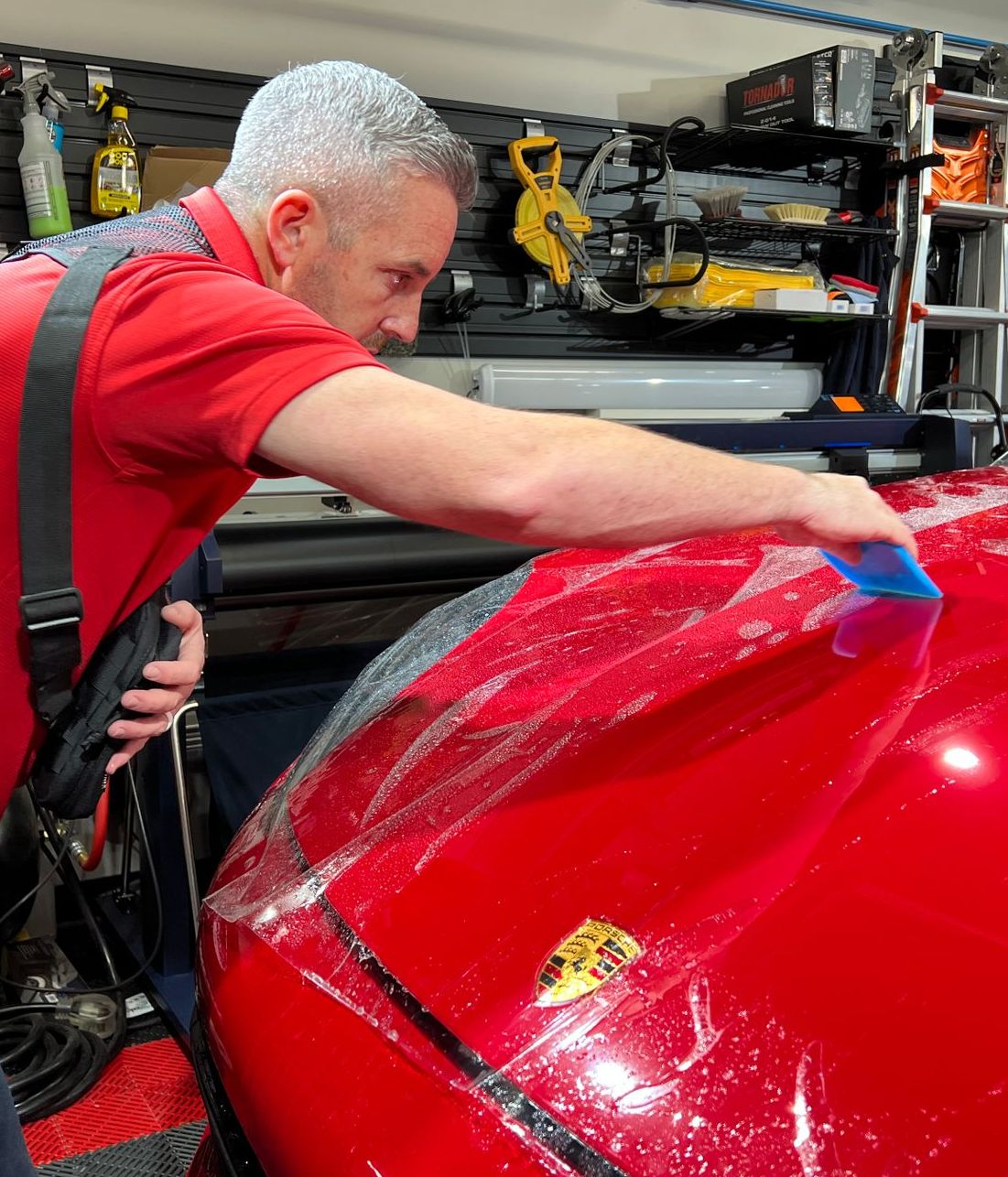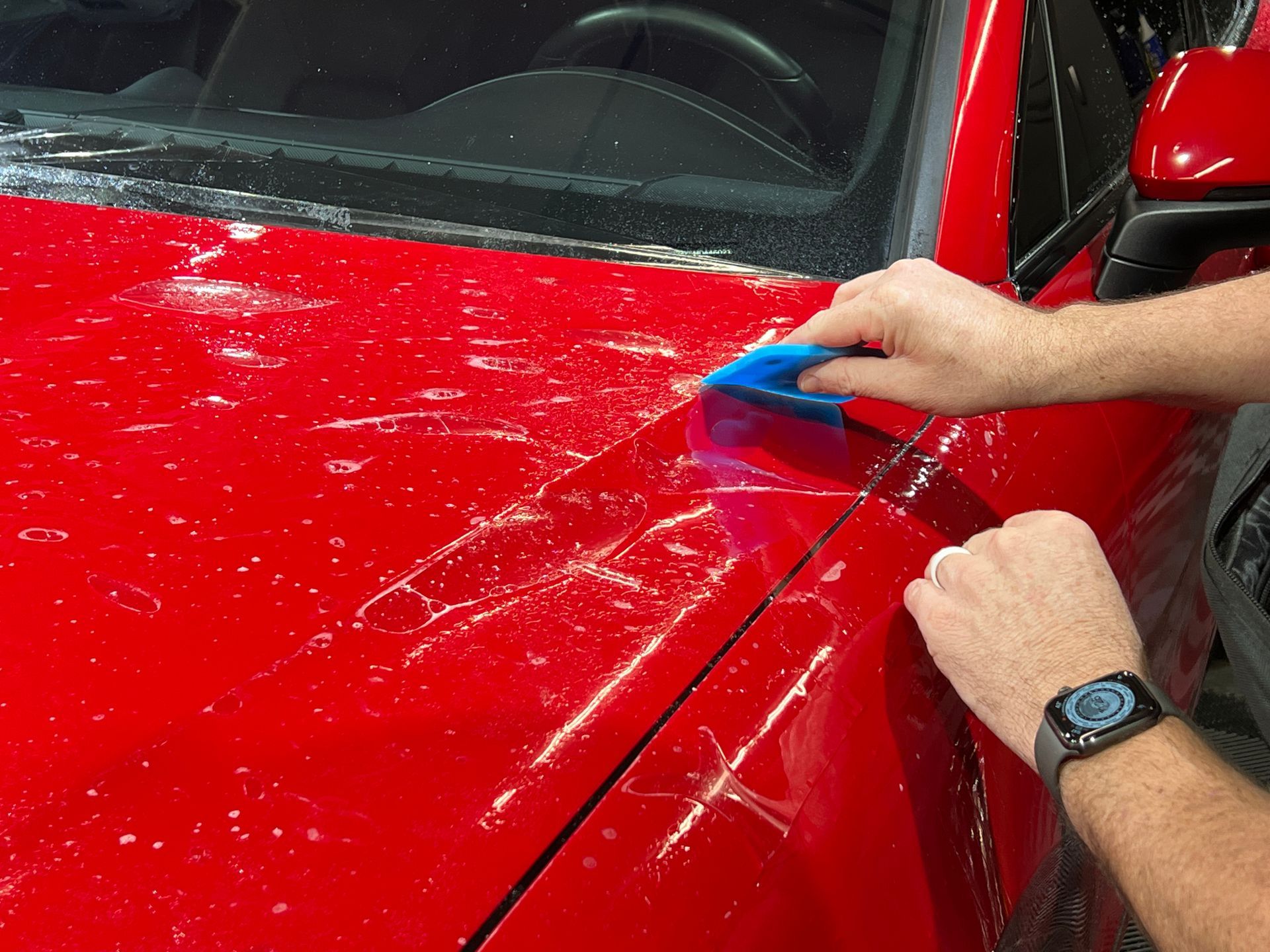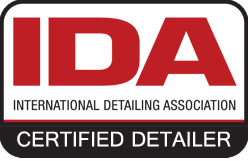Car Paint Protection Film Maintenance: Tips for Keeping Your Car Looking New

Imagine driving your dream car down the street, the envy of all your friends and neighbors. The gleaming finish catches the sunlight, creating a mesmerizing effect as you take your prized possession for a spin. But that enchanting glow can quickly fade due to scratches, chips, and scuffs caused by everyday wear and tear. Car paint protection film (PPF) is an essential tool to preserve and protect that stunning appearance. However, PPF requires proper care and maintenance to ensure its effectiveness. In this blog post, we'll share expert tips to keep your car's PPF functioning efficiently and looking flawless for years to come!
Proper Maintenance of Car Paint Protection Film
Installing car paint protection film is an investment in your vehicle's longevity, and proper maintenance is essential for keeping it looking new. One major benefit of PPF is that it provides a barrier that protects against environmental contaminants, but regular cleaning is still required to ensure the film works as intended.
Washing Tips for Protected Cars
It's important to use proper washing techniques when caring for a car with PPF installed. Using harsh chemicals or abrasive materials can damage or even remove the protective film altogether, making maintenance even more critical.
Imagine you're washing your car after spotting some bird droppings on its surface. While scrubbing at the stain with an abrasive sponge might seem like a good solution initially, you can end up scratching and damaging both the PPF and paintwork underneath, thus defeating its purpose of providing protection against contaminants.
To avoid any issues when cleaning protected cars, follow these tips:
Use only high-quality cleaning products specifically designed for use on cars, such as shampoos and microfiber mitts.
Clean your car in the shade during cooler temperatures to avoid direct sunlight, which can cause water spots or marks on the paintwork.
Avoid commercial car washes that use harsh chemicals and rough brushes that can damage the PPF. Instead, hand wash your car using a gentle detergent and a soft sponge or microfiber towel. Rinse often to remove any dirt or debris, so you don't scratch the PPF.
Always dry your car thoroughly after washing it to avoid water spots.
Following these simple steps for proper maintenance of your car's paint protection film will allow the protective coating to function efficiently, keeping your car looking new for years to come.
Products to Use and Avoid
Maintaining a car's paint protection film is not just about sticking to a cleaning routine. The products you use while cleaning your vehicle can make a significant difference in the film's longevity, shine, and overall quality. Although some cleaners are safe for use on most surfaces, it is best to check with the manufacturer before using any product on your paint protection film.
When it comes to cleaning products, avoid those that contain harsh chemicals or abrasives, as they can dull the paint and damage the film over time. For instance, acidic solutions such as vinegar and lemon juice should be avoided as well, since they can break down the protective barrier of the film. Furthermore, avoid using dish soap or laundry detergents; they may strip off any wax or sealants that you have applied previously.
There might be claims by some detailing experts regarding the safe use of quick detailers and spray waxes on paint protection films. While that may be true in some cases, it is important to come back to the basics: Check with the manufacturer before using anything you're not sure of. Keep in mind that some quick detailers may contain silicone ingredients that can cause discoloration or hazing on vinyl-based PPFs if used too frequently. Similarly, spray waxes can build up and look dusty when used excessively on plastic-based PPFs.
Dealing with Common Contaminants
While paint protection films are known for their durability and resistance to scratches, they can still get contaminated by natural and human-made elements while on the road. Two of the most common contaminants that car owners have to deal with are bird droppings and bug splatter.
Think of bird droppings as acidic bombs that can damage the paint if left untreated. Similarly, bug splatter can also be harmful to your PPF because it could corrode or create pits in the material over time. Therefore, it's essential to clean these contaminants from your vehicle regularly.
To remove bird droppings or bug splatter safely without damaging your car's paint protection film, moisten a cloth with water and lay it over the affected area for 10 minutes. Don't try to wipe away stubborn stains forcefully since you may scratch up the delicate surface of your car's PPF. You could use a specialized spray made for removing bugs or tar along with a microfiber mitt, gently cleaning in light back-and-forth motions until finally washing off any excess residue.

Prolonging the Life of Your Film
Regular inspections of the film's overall condition are imperative to ensuring it is as effective as possible. Inspect areas like the hood, fenders, mirrors, bumper, doors, and other high-impact regions to ensure that no scratches or chips have been caused during everyday driving, as they may lead to more severe damage if neglected for too long.
Furthermore, avoiding commercial car washes is highly recommended because their brushes can be abrasive and lead to premature failure of PPF. Hand-washing with top-quality cleaning products like shampoos and microfiber mitts is preferable to help prolong your automotive film. Additionally, washing your car regularly using high-quality gear like foam cannons or pressure washers for gentle rinsing helps avoid exposure to harsh contaminants such as tree sap or salt.
PPF requires regular care measures that involve regular inspections for damages, the initial avoidance of rough contaminants, and the avoidance of commercial cleaning stations. These all add up to prolonging the life of your paint protection film. Remembering these tips will ensure that your investment continues to protect your car's finish for an extended period while remaining in top condition.
Regular Inspections and Care
Maintaining your car's paint protection film is critical to ensuring it lasts as long as possible and keeps your car looking like new. Regular inspections are necessary to identify damage early on before it becomes too extensive, allowing quick repairs. It's also essential to clean your car regularly to prevent dirt buildup, which can cause discoloration or even corrosion, damaging the film's integrity.
One of the easiest and quickest ways to inspect your PPF is by washing the car, since this allows you to give it a good once-over. Before washing, take a closer look at the film for signs of peeling or bubbling, and if you notice any, schedule an appointment with a professional installer immediately for repairs. Checking the edges is crucial since most dirt accumulates there over time.
Another component of regular care is checking the status of the entire surface of the PPF by hand. Unlike ceramic coatings, PPFs must be thoroughly checked manually because they are prone to sticking well around sharp curves and corners that could peel away easily over time. Ensure that no debris or scratches have penetrated beyond the film’s edge and into the paint’s protected layer.
Responses to Frequently Asked Questions
Are there any specific weather or environmental factors that can affect the performance of a paint protection film?
Yes, there are a number of environmental factors that can affect the performance of paint protection film (PPF), particularly in regards to its durability and ability to protect your car's paint. Here are some examples:
UV rays: Prolonged exposure to the sun's ultraviolet (UV) rays can cause fading and discoloration of the PPF, which may reduce its ability to effectively protect your paint. A high-quality PPF with UV inhibitors is recommended if you live in a sunny area.
Temperature: Extreme heat or cold can also impact PPF longevity. For example, extreme heat can cause the adhesive layer to soften or become less sticky, while extreme cold can cause the film to become brittle and crack. Quality films designed for your specific climate can help prevent these issues.
Humidity: Debris and moisture trapped beneath PPF can lead to unsightly stains and mold growth over time. Ensuring proper installation by a certified professional can minimize this issue.
Overall, it's important to choose a high-quality PPF that is appropriate for your climate and driving habits. Regular maintenance, including washing and waxing, will also help prolong the life of your protection film.
What is a paint protection film, and how does it work?
A paint protection film, commonly referred to as PPF, is a clear, thin polyurethane film that is applied to the exterior of your car to protect it from everyday hazards such as scratches, rock chips, and insect acid. PPF works by providing an invisible barrier between your car's paint and various hazards, effectively acting as a shield against potential damage.
PPF has become increasingly popular over the years due to its outstanding performance in protecting cars. When PPF is installed correctly, it bonds seamlessly with the paint surface, becoming virtually invisible and maintaining the color and texture of your car's original finish. It also helps prevent discoloration and fading caused by harmful UV rays.
PPF is an excellent investment when it comes to protecting your car from various potential damages. It works as an additional layer of protection on top of your car's paint job and keeps it looking new for an extended period while making maintenance easier.
What are the benefits of using a paint protection film on a car's exterior?
There are a plethora of benefits when it comes to using a paint protection film on your car's exterior.
1. Protection from scratches and dents: A high-quality paint protection film acts as a barrier between your car's paint and natural wear and tear, helping it avoid scratches, scuffs, and dents.
2. Improved resale value: The longevity of your vehicle is increased with a painted area that isn't exposed to direct sunlight or physical damage caused by daily use. As a result, this simple addition will help increase its resale value.
3. Cost-effective: Investing in a paint protection film compared to repainting an entire car is much cheaper in the long run.
4. Prevents UV Damage: Most modern paint protection films block out harmful UV rays from the sun. Moreover, protecting the exterior from excessive sun exposure also prevents fading and discoloration that would normally occur over time.
How often should a paint protection film be cleaned and maintained?
If you want to keep your car looking new and shiny, cleaning and maintaining the paint protection film is crucial. But how often should you do it? Well, there's no one-size-fits-all answer to this question, as the frequency of maintenance depends on various factors such as weather conditions, driving habits, etc. However, as a rule of thumb, it's recommended to clean your paint protection film at least once every three months.
This recommendation is based on the fact that dirt and contaminants can accumulate on the film's surface over time and degrade its protective properties. So if you want to get the most out of your investment in a paint protection film, make sure to clean it regularly and follow the manufacturer's recommended maintenance procedures. It may seem like a small inconvenience now, but it will pay off in the long run when your car continues to look like new years down the road.
What products or tools are recommended for cleaning and maintaining a paint protection film?
When it comes to cleaning and maintaining your car’s paint protection film, there are a few products and tools that are recommended. Firstly, it is essential to use a high-quality microfiber towel for washing and drying your car, as any harsh or abrasive materials can damage the protective film. Furthermore, using a pH-neutral car wash soap ensures that the protective film does not get damaged due to acidic substances.
In addition to these basics, using a clay bar and lubricant can help remove any contaminants from the paint protection film. It is important not to use any aggressive chemicals or solvents on the film, as this could damage or even dissolve the protective layer. Using a sealant helps protect the surface from UV rays and other environmental factors, providing additional durability.
Obsessed Detail and Restoration: Trusted Paint Protection Film Service in South Jordan, UT
Are you ready to elevate your vehicle's protection to the next level? Look no further than Obsessed Detail and Restoration, your trusted destination for paint protection film service in South Jordan, UT. Our team of dedicated experts is committed to preserving your vehicle's flawless appearance and shielding it from chips, scratches, and environmental damage. With our meticulous attention to detail, premium-grade products, and unrivaled expertise, we guarantee exceptional results that will leave you obsessed with your car's stunning finish. Don't settle for anything less than the best when it comes to protecting your investment. Take action now and choose Obsessed Detail and Restoration to safeguard your vehicle's beauty for years to come. Contact us today and let us unleash the full potential of your prized possession.


